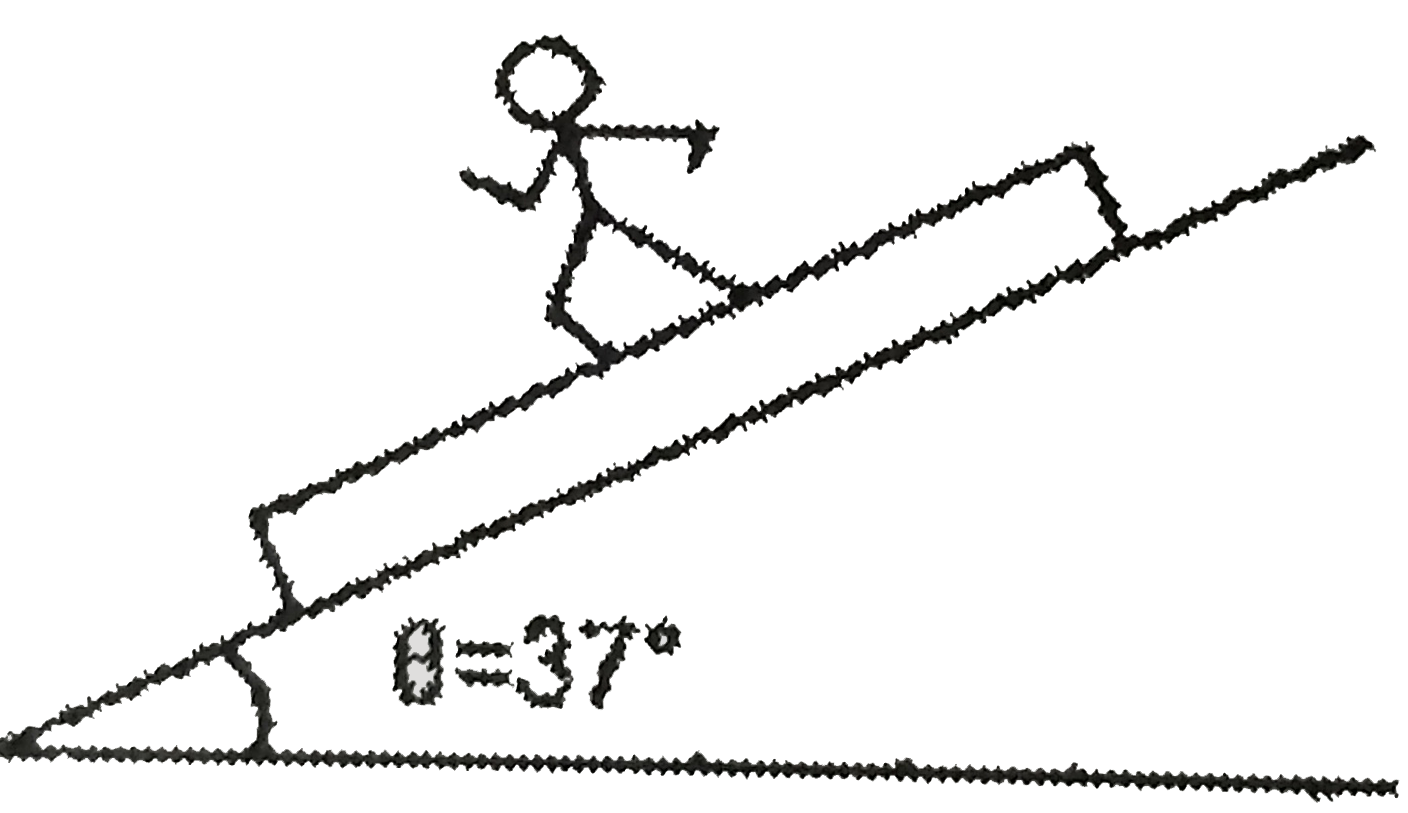A body of mass 0.3kg is taken up an inclined plane of length 10m and height 5m, and then allowed to slide down to the bottom again. The coefficient of friction between the body and the plane is 0.15.
What is the
(a) work done by the gravitational force over the round trip ?
(b) work done by the applied force on the upward journey ?
(c) work done by the frictional force over the round trip ,
(d)kinetic energy of the body at the end of the trip ?
Step by step video & image solution for A body of mass 0.3kg is taken up an inclined plane of length 10m and height 5m, and then allowed to slide down to the bottom again. The coefficient of friction between the body and the plane is 0.15. What is the (a) work done by the gravitational force over the round trip ? (b) work done by the applied force on the upward journey ? (c) work done by the frictional force over the round trip , (d)kinetic energy of the body at the end of the trip ? by Physics experts to help you in doubts & scoring excellent marks in Class 11 exams.
Topper's Solved these Questions
- BOOK - PRADEEPCHAPTER - WORK, ENERGY AND POWEREXERCISE - NCERT( Multiple choide questions-1)21videos
WORK, ENERGY AND POWER
- BOOK - PRADEEPCHAPTER - WORK, ENERGY AND POWEREXERCISE - JEE (Main and Advanced)82videos
WORK, ENERGY AND POWER
- BOOK - PRADEEPCHAPTER - WORK, ENERGY AND POWEREXERCISE - Fill in the blanks10videos
WORK, ENERGY AND POWER
- BOOK - PRADEEPCHAPTER - THERMODYNAMICSEXERCISE - Assertion- Reason Type Questions19videos
THERMODYNAMICS
Similar Questions
A body of mass 0.3kg is taken up an inclined plane of length 10m and height 5m, and then allowed to slide down to the bottom again. The coefficient of friction between the body and the plane is 0.15.
What is the
(a) work done by the gravitational force over the round trip ?
(b) work done by the applied force on the upward journey ?
(c) work done by the frictional force over the round trip ,
(d)kinetic energy of the body at the end of the trip ?View SolutionA body of mass 0.3 kg is taken up an inclined plane of length 10 m and height 5 m, and then allowed to slide down the bottom again. The coefficient of friction between the body and the plane is 0.15. What is the
(i) work done by the applied force over the upward journey?
(ii) work the by gravitational force over the round trip?
(iii)work the by the frictional force over the round trip?
Which of the above forces (except applied force )is/are conservative forces? View Solution
View Solution
Knowledge Check
- Question 1 - Select One
A body of mass 0.5 kg is taken up an inclined plane of length 10 m and height 5 m and then allowed to slide down to the bottom again. The coefficient of friction between the body and the plane is 0.1. The work done by the frictional force over the round trip is
A5 JB5√3JC−5JD−5√3J - Question 2 - Select One
A body of mass m slides down an inclined plane making an angle of 45∘ with the horizontal. If the coefficient of friction between the body and the plane be 0.3, the acceleration of the body is approximately equal to :
A0.22 gB0.30 gC0.49 gD0.70 g - Question 3 - Select One
A block of mass m slides down a rough inclined plane of inclination θ with horizontal with zero initial velocity. The coefficient of friction between the block and the plane is μ with θ>tan−1(μ). Rate of work done by the force of friction at time t is
Aμmg2tsinθBmg2t(sinθ−μcosθ)Cμmg2tcosθ(sinθ−μcosθ)Dμmg2tcosθ
A block of mass 6.0 kg is pushed up an incline to its top by a man and then allowed to slide down to the bottom. The length of incline is 10 m and its height is 5.0 m. the coefficient of friction between block and incline is 0.40. Calculate (a) the work done by the gravitational force over the complete round trip of the block, (b) the work done by the man during the upward journey, (c) the mechanical energy loss due to friction over the round trip, and (d) the speed of the block when it reaches the bottom.
View SolutionA body of mass m is pushed with the initial velocity v0 up an inclined plane of angle of inclination θ. The co-efficient or friction between the body and the plane is μ. What is the net work done by fnction during the ascent of the body before it comes to stop ?
View SolutionA plank of mass 3m is placed on a rough inclined plane and a man of mass m walks down the board. If the coefficient of friction between the board and inclined plane is μ=0.5, the minimum acceleration of does not slide is:
 View Solution
View SolutionA block of mass m slides down a rough inclined plane of inclination θ with horizontal with zero initial velocity. The coefficient of friction between the block and the plane is μ with θ>tan−1(μ). Rate of work done by the force of friction at time t is
View SolutionA body is sliding down a rough inclined plane The coefficient of friction between the body and the plane is 0.5.The ratio of the net force required for the body to slide down and the normal reaction on the body is 1:2 Then the angle of the inclined plane is
View Solution
